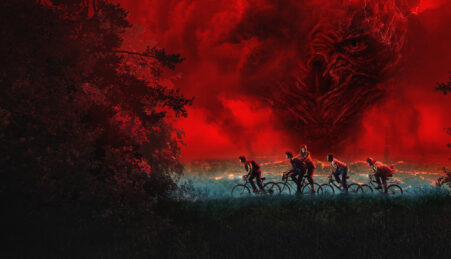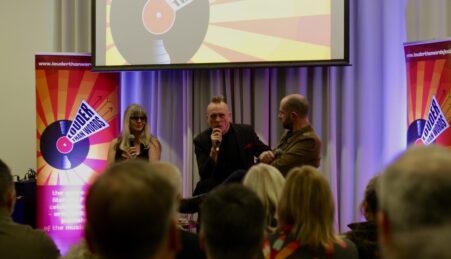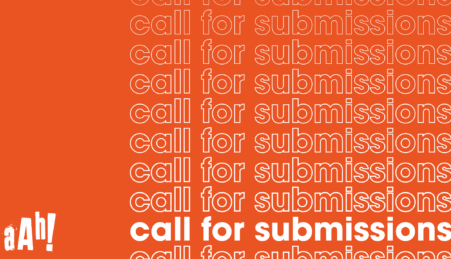By Freddie Bruhin-Price
Photography by James Skipper
This week, a group of eager participants gathered in Manchester Metropolitan University’s (MMU) Holden Cafe Gallery to take part in a creative session entitled ‘BODY/CAM: Resistance, surveillance and the self(ie)’. The session, attended by photographers, artists and students, explored the role of the visual image in dialogues of conflict, with focus on the selfie.
The event looked at the shift in the role of the photograph, as digital photography and recording has become widespread across the globe. As the theme for this season’s Humanities in Public (HiP) programme is ‘WAR’, the issues surrounding photography were explored with the emphasis on how it is used to represent conflict. The ‘WAR’ strand seeks to question whether conflict is an inherent part of human society, and whether it is realistic for us to expect collective peace in the modern world.
Humanity Hallows spoke to Jonathan, a student who found out about the event after he joined the ‘Violence in the Police Force’ Facebook group. He said that as well as being an interesting and interactive session, he hoped it would be a useful session to augment his studies here at MMU.
The event began with a short yet impassioned debate led by Jenna Brager, an expert in conflict imagery and Women’s Studies from the Rutgers Institute of New Jersey. Jenna initiated discussions of the selfie, a topic which most of the people in the room had opinions about. However, to some of us, the notion of the selfie as a political weapon was a new one.

Adi Kuntsman and Jenna Brager
Prior to the BODY/CAM session, Humanity Hallows spoke to Jenna along with MMU Lecturer in Digital Media, Dr Adi Kuntsman to ask them about an event they had hosted earlier that day. As Jenna explained, the talk, entitled ‘PHOTOBOMB: A dialogue on selfies, violence and war’, discussed the “links between selfies and politics. There has been a massive rise in what we call Digital Militarism.”
She added that there is now a strange duality to the use of the selfie, with “Israeli and Palestinian civilians taking selfies to show support for their armies, and the troops themselves taking ‘soldier selfies’.”
Occupying the same space as the workshop was a display of images from Israel and Palestine. The images were produced by a group called Activestills, a collective of photojournalists working in these regions. The collective, which aims to use photography as a vehicle for social change, will be present at the PHOTOBOMB exhibition, taking place between the 13th and the 20th of November in the Holden Cafe Gallery. Among the works being displayed at PHOTOBOMB are the creative pieces from the BODY/CAM session.
The talk was energetic and controversial, exploring issues such as “the phenomenon of people dying whilst trying to take more and more extreme selfies.” The term BODY/CAM was also discussed. The title was chosen for the talk as it represents the relationship between body and camera. However, it is also the word used to describe the cameras, worn affixed to helmets and uniforms, that are given to police and security forces to track incidents and arrests as they occur.
In the creative part of the workshop, participants like Mark, a local artist, began to work on their own interpretations of the images and materials in the Café Space. Mark’s creation was a thrilling 3-D interpretation of the #NotABugsplat art installation, which was designed to challenge operators of predator drones by appealing to their sense of compassion. Opposite Mark was Rachel, also an artist. She created a striking drawing of some of the Activestills photography. The images in question showed the families of the victims of conflict holding images of their lost loved ones before a camera lens.

An image provided by the Activestills Collective
Another participant, Rado, a photographer whose work concentrates on the philosophy of photography, produced a stark, visceral sign bearing the slogan “LOOK AT ME.” He explained that, whereas in the past photography was a means of recording memories, it has now become a way of telling the world “this is what I’m doing now.” He also made the observation that it costs nothing to produce an image, and it can then be deleted easily. “Everything has changed,” he said. “To destroy an image in the past was a physical act of destruction. Now it can be done with the click of a button.”
Rado, Mark and Rachel’s work can be seen at the PHOTOBOMB exhibition this week. The exhibition includes the BODY/CAM workshop’s creations and the Activestills collection of images, as well as a series of projections of social media and selfie imagery relating to conflict.







Leave a reply